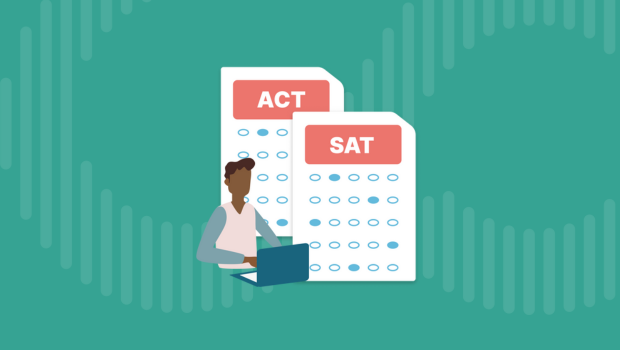4 min read
ACT and SAT Must-Knows for High Schoolers
We recently published a podcast episode on this topic. This blog post provides a recap of what we covered during the episode. Hi! It’s Abby from...
Free for students & their families
Seamlessly integrated, affordable systems for use across your district.
Career Readiness for 6-8 grade, built to guide and track progress in the early years of career exploration.
Scoir + Common App are integrated for the 2025-26 academic year!
Check out content and practical guides to help inform your enrollment strategies and programs.

Junior year of high school is a key point in the college planning process. Between preparing for standardized tests and keeping up with extracurriculars, this year is full of hard work, reflection, and discovery.
All these big things can be overwhelming. In this article, we'll review a junior year checklist that’ll keep you on track for applying to college or pursuing a career, including:
Be sure to connect with your counselor on the 11th grade to-dos and timeline they'd recommend.
Check out this Instagram post below for the highlights of what we cover in this article.
Self-discovery: Make lists! What are your skills? What are your favorite classes? What are you interested in studying in college? What careers intrigue you? Scoir students can use PrinciplesYou and the Career Interest Assessment to answer these questions and more. Through a series of scientifically validated questions, you can unearth careers that align with your tendencies, characteristics, and interests, and explore those careers right in Scoir! You can also search for colleges that can help you get into careers you’re interested in (which leads to the next to-do!).
College discovery: Now’s the time to begin building your college list. Getting started can be the hardest part, but once you do, don't be afraid to let your list grow at the start of 11th grade! Students in Scoir can discover colleges, build their lists using My Colleges, collaborate with counselors and parents/guardians, and begin to explore recommended colleges based on their profiles.
If you're looking to join the workforce right after high school, then the equivalent would be listing out careers or employers that you're interested in.
Build your calendar: Explore your high school’s upcoming college visits, college fairs, or job fairs in the area. These are great opportunities to connect with college or employer representatives. Pick a few you'd like to attend!
Take the PSAT/NMSQT®: This test is given in October. If you need accommodations, make sure to plan and ask early.
Make a plan for the SAT and ACT: First determine whether or not you need to take the SAT and ACT (hint, most students do!). Then make a plan and start practicing!
Here are some resources from our partner Test Innovators to help you get started:
Consider your financial aid need: Begin thinking about college (or post-high-school) finances and talking openly as a family. It’s never too early to start thinking about finances and exploring tools to help you understand what college (or living on your own!) might cost you. Students can work with their parents/guardians to use our cost calculator.
Looking to learn more about financial aid? These resources can help!
Register with NCAA (if you haven't already): If you’re a student-athlete planning to play in college, ensure you register with the NCAA.
Sign up for a spring test: Whether it’s your first test or you want to test again, look into available spring dates for the SAT and/or ACT and register online. If you require a fee waiver, ensure you ask ahead of time!
Our partner Test Innovators can help you practice for the ACT and SAT! They offer full-length practice tests with personalized feedback based on your performance. We’d highly recommend checking them out.
The Test Innovators blog also has a ton of great free resources, from 200+ Vocabulary Words to Know for the Digital SAT to live webinars about the SAT and ACT.
Study for and take AP Exams: If you’re taking Advanced Placement courses, make sure you are prepared for and signed up for exams in May.
Let your list bloom: Continue researching colleges based on type, major, cost, and more. For students on Scoir, check out the Compare Colleges feature to view colleges side-by-side (including 2-year, tech, trade, and 4-year colleges!) and explore what a best-fit college looks like to you.
You can also explore careers on Scoir, including how bright of an outlook they have!
Time to break out your calendar again! Pencil in some chances to further explore colleges (or careers) on your list–whether that’s an in-person or online visit, college fair, or a few hours of online research.
Understand sources of financial aid: Winter is a great time to wrap your mind around the available sources of financial aid for college. Conduct your research and make time to talk as a family.
Request letters of recommendation: Usually, students request a letter of recommendation from an 11th-grade core subject teacher, so choose wisely and try to ask before leaving for summer! We recommend double-checking with your counselor before asking for a rec, as some high schools follow a slightly different timeline.
Are you considering ROTC? If so, you should begin the application process before the summer.
Prepare for the FAFSA: You’ll want to apply as soon as possible as soon as the FAFSA is available in the Fall. Over the summer months, make sure you create a username and password and collect financial documents like tax returns. The sooner you can start this process, the better.
Visit colleges near and far: As time and budget allow, take the spring and summer to visit campuses. Connect with and talk to as many faculty and current students as you discover what you're looking for in your best-fit college.
Alternatively, career-ready students could try networking. Your high school counselor, parent/guardian, teachers, and more may be able to connect you to people who are working in the careers you are considering.
Create a portfolio or resume: Record and collect the accomplishments, extracurriculars, and work experience that you have accumulated over your high school career. Students can use Scoir to collect this type of information, auto-format a resume, and export it for use!
Add your GPA and test scores: If your school's settings allow, upload your GPA and any test scores to your Scoir profile. This will help give you better-informed scattergrams, which show historical admissions decisions using GPAs and SAT/ACT scores of students who graduated from your high school before you.
To learn more about scattergrams in Scoir, check out this helpful document. (P.S. Don't worry! GPA and test scores will not be automatically sent to colleges.)
Consider drafting your college essay: Summer is a great time to brainstorm topics for your college essay and pick a date for when you'll start writing.
Keep busy: Stay active over the summer! Whether that’s by bagging groceries, signing up to be a camp counselor, or participating in a summer program...just try to stay active and involved! Here are some ways to make the most of your summer.
We hope this junior year checklist is helpful for you! If you're interested, feel free to make a Scoir account for free. On Scoir, you can search for colleges, build your list, and even apply to schools!
Most juniors take the SAT or ACT in spring. Testing early leaves time to retest in fall of senior year if needed.
Spring and summer of junior year are great for college visits. You’ll see campuses in session and still have time to refine your list before senior year applications.
Yes, colleges see your junior year transcripts. Strong grades show you’re ready for challenging coursework and can boost your admissions chances.
A balanced list usually includes about eight schools: a mix of reach, target, and likely options.
It’s best to ask teachers in spring of junior year. This gives them time to prepare before senior year deadlines arrive.
Create a study schedule. Practice during lighter weeks in school and lean on resources like practice tests for efficient prep.
This article was originally published on September 16, 2021. It was updated on October 1, 2025 for accuracy and comprehensiveness.


4 min read
We recently published a podcast episode on this topic. This blog post provides a recap of what we covered during the episode. Hi! It’s Abby from...

6 min read
Gaining admission to the college(s) of your choice might weigh heavily on your mind at the moment. The odds are that the prospect of affording...

8 min read
The Free Application for Federal Student Aid (FAFSA), managed by the Department of Education, is the gateway to federal and state financial aid for...